#Jack-in-the-Pulpit
Text
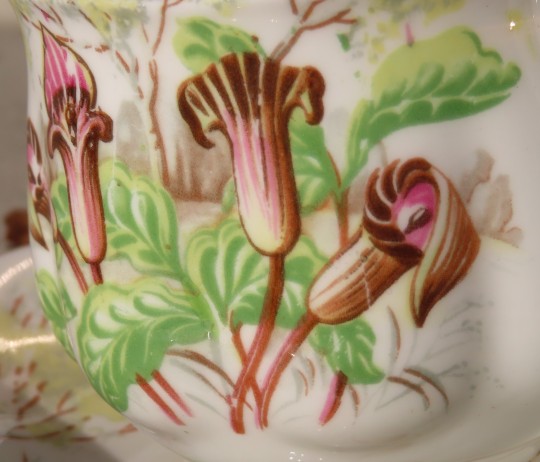


Arisaema triphyllum (Jack-in-the-pulpit)
Jack and Jill
Jack-in-the-pulpit is a species native to eastern North America. The inflorescence can be male (with male flowers only), bisexual (with both male and female flowers), or female (with female flowers only).
As the Arisaema grows, individuals change sex in a pattern determined by their size. In a small plant, all of the flowers are male. As the plant matures and grows larger, the spadix produces female flowers as well as male flowers. When full grown, Jack-in-the-pulpit becomes Jill-in-the-pulpit and produces female flowers only. This reproductive system is called 'sequential hermaphroditism' and it's rare, known only in a very small number of flowering plant species.
Meanwhile, back at the tea cup collection...
Royal Albert, Jack-in-a-Pulpit, Bone China tea cup and saucer
#flowers#photographers on tumblr#Jack-in-the-pulpit#Royal Albert#tea cups#fleurs#flores#fiori#blumen#bloemen#V
81 notes
·
View notes
Text



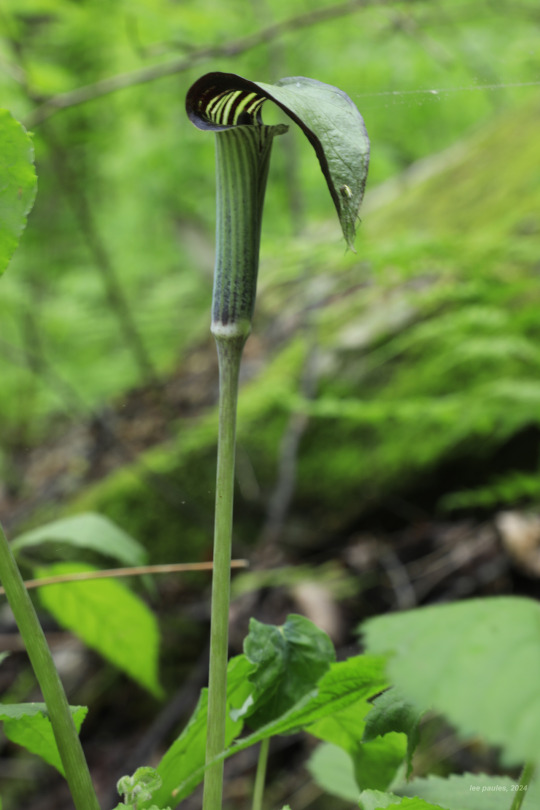

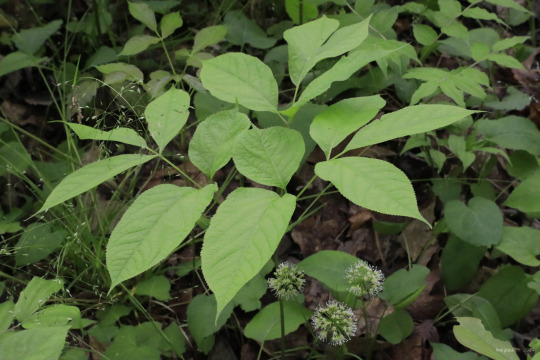
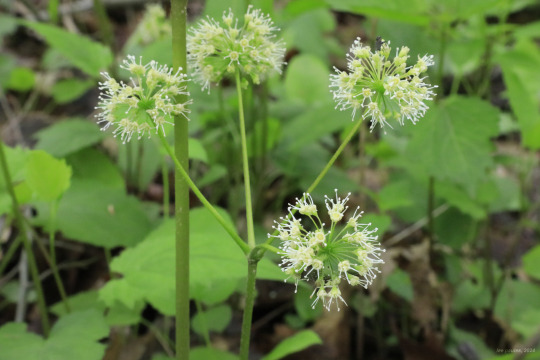
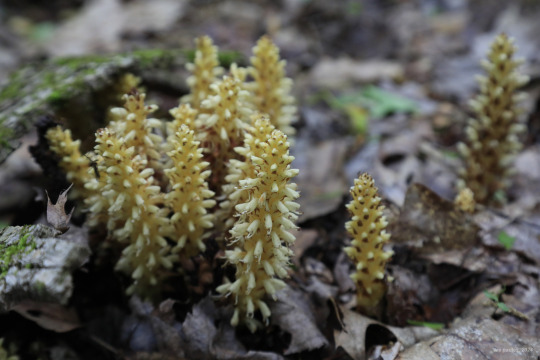

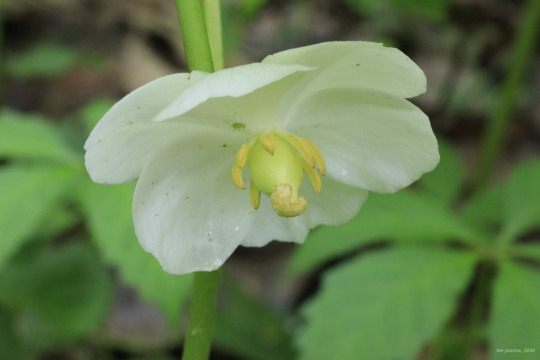

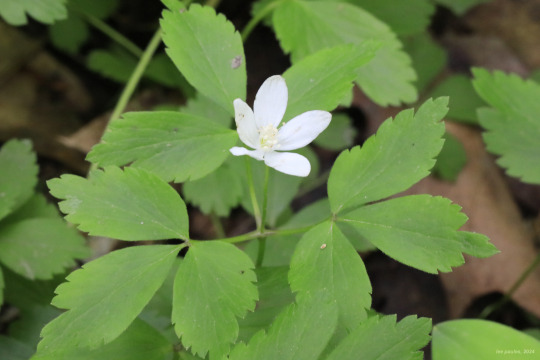

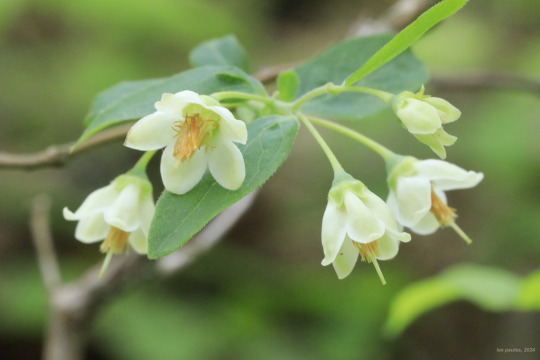


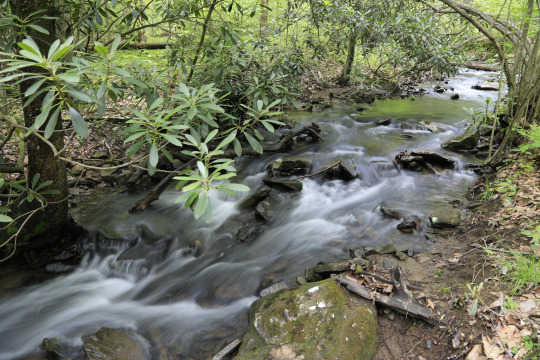
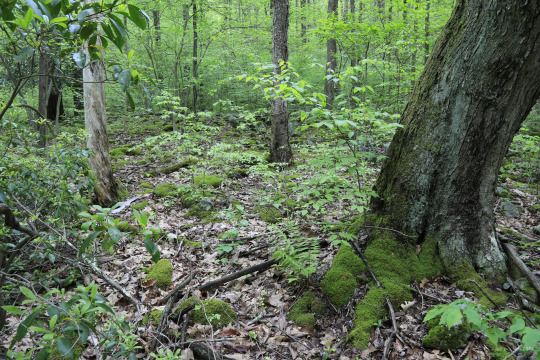

The awful weather continues in NC-WV, although thankfully not on the order of the destructive storms out west. I stayed close to home for my weekend hike, heading out to the touristy side of the Cheat River Canyon, including Raven Rock, a spectacular sandstone promontory overlooking the river. I thought I had it to myself, until a rabble of church youth singers marched in on Crocs to a caterwaul of bad turkey calls (I hope that's not their stage act). They unwittingly posed for one of my shots, adding a bit of perspective to one of the sheer sandstone cliffs that constitute Raven Rock (top photo). Second photo is the perspective from the edge of that same cliff. Storms came swooping in shortly after I made it back to the trailhead. The pink lady slippers are at peak bloom right now, along with the gorgeous deerberry, by far and away the most beautiful of the Vaccinium shrubs that grow in this area. And for those of you who search out the mountain laurel blooms in May, your time has nearly arrived. :-)

#appalachia#vandalia#west virginia#wildflowers#flora#spring#coopers rock state forest#cheat river canyon#raven rock#scott run#scott run trail#pink lady's slipper#jack-in-the-pulpit#wild sarsaparilla#cancer root#mayapple#wood anemone#perfoliate bellwort#deerberry#speckled wood lily#indian cucumber#indian cucumber-root#mountain laurel
42 notes
·
View notes
Text
#TwoForTuesday + #TurtleTuesday:

A Pair of Vases: #Turtles with Jack-in-the-Pulpit*, c. 1879
Designer: Karl H. L. Müller (1820-1887)
Manufacturer: Union Porcelain Works, NYC
Porcelain, under- and overglaze decoration
Baltimore Museum of Art 1997.I27.I, 1997.I27.2
*likely misidentified; appears to be a pitcher plant, and a similar vase by the same company at another museum identifies it as such - see photo & notes below
Update #1: there is a single one of these vases on display at the Met too:

Update #2: this version at the Philadelphia Museum of Art ID’s it as a pitcher plant, as has a frog instead of a turtle:


#animals in art#19th century art#turtle#turtles#art#Turtle Tuesday#pair#Two for Tuesday#porcelain#ceramics#decorative arts#American art#jack-in-the-pulpit#Baltimore Museum of Art#museum visit#Union Porcelain Works#Karl H. L. Müller#Metropolitan Museum of Art New York#Philadelphia Museum of Art#frog#ID#misidentification
37 notes
·
View notes
Text
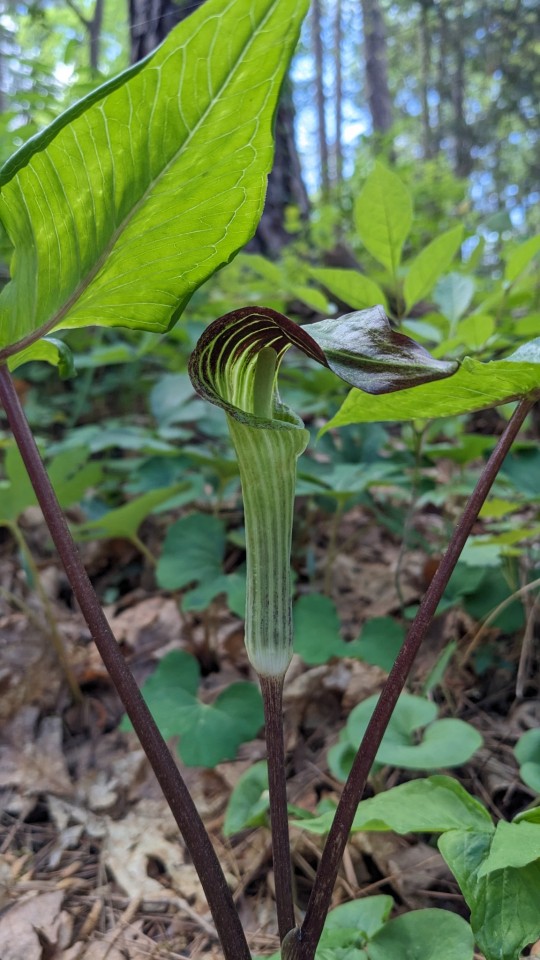
Arisaema triphyllum / Jack-in-the-Pulpit at the Sarah P. Duke Gardens at Duke University in Durham, NC
#Arisaema triphyllum#Arisaema#Araceae#Jack-in-the-Pulpit#jack in the pulpit#Bog onion#Brown dragon#Indian turnip#American wake robin#Wild turnip#Native plants#Native flowers#Plants#Flowers#Nature photography#photographers on tumblr#Sarah P. Duke Gardens#Duke Gardens#Duke University#Durham#Durham NC#North Carolina
8 notes
·
View notes
Text

Jack-in-the-Pulpit (Arisaema triphyllum)
Family: Arum Family (Araceae)
IUCN Conservation Status: Unassessed
Also known as the Bog Onion or Brown Dragon Arum, the Jack-in-the-Pulpit is a small and highly unusual plant found across much of eastern North America. Growing to be around 60cm (2ft) tall, it bears its tiny flowers between March and June on a long spike-like structure surrounded by a large striped leaf known as a pulpit or spathe (which serves to protect the fragile flowers, provides a surface for pollinators to land on and attracts pollinators with its striking patterns, and which is often mistaken for the plant's flower) and is unusual among plants in that it is a sequential hermaphrodite; young adult individuals produce exclusively pollen-producing "male" flowers, but as they age they begin to produce a progressively larger number of pollen-receiving, seed-producing "female" flowers, with all of the flowers on older individuals being "female." The curved internal structure of the pulpit makes it difficult for insects to leave it the way they entered it, and as the "sex" of a Jack-in-the-Pulpit changes throughout its life, its reproductive strategy also changes; the pulpits of young individuals have small openings on their underside that allow their pollinators (mainly small flies, but also certain beetles) to leave and carry the plant's pollen away from it, but in older "female" individuals, in what is assumed to be an adaptation to ensure that any pollen carried into the pulpit is transferred to the flowers, the pulpit has no such opening, trapping the insects permanently and making this species a very rare example of a plant that kills its pollinators. As a defence against herbivorous animals the leaves and stems of Jack-in-the-Pulpits are poisonous and lined with tiny needle-like calcium structures called raphides which cause painful irritation and aid the toxins in entering the tissues of animals that bite or crush the plant, although following pollination "female" flowers develop into small red berries that, after ripening and falling from the plant, can be safely eaten by birds and certain small mammals, allowing the seeds within to be transported away from their parent in the animal's digestive system. Young Jack-in-the-Pulpits are mature enough to bare flowers at around 3 years of age, and enter a state of dormancy in which their leaves and aboveground stems die back each autumn/fall, rapidly re-growing in the spring with the help of a nutrients-filled extension of their roots called a corm. While all populations of Jack-in-the-Pulpits were historically regarded as belonging to a single species, genetic evidence now suggests that they are likely a species complex (a group of very closely related and near-identical species that are difficult to reliably distinguish from one another,) made up of at least 4 distinct species with a possible 5th species being recognised by some authorities.
--------------------------------------------------------------------------
Image Source: https://www.inaturalist.org/taxa/50310-Arisaema-triphyllum
#Jack-in-the-Pulpit#Jack-in-the-Pulpits#wildlife#biology#botany#North American wildlife#plant#plants#wild plants#arum#arums
48 notes
·
View notes
Photo

(via "Flowers and giant leopard moth" Art Print for Sale by KnowingWonder)
A giant leopard moth is surrounded by a jack-in-the-pulpit and an iris.
#findyourthing#redbubble#leopardmoth#jack-in-the-pulpit#iris#flowers#flyinginsects#drawing#charcoalandgraphite#creativity#artwork#knowingwonder#antennae
2 notes
·
View notes
Text

Ohio Spring Wildflower Field Guide
#flower#flowers#spring flowers#spring#floral#wildflowers#wild flowers#ohio#ohio wild flowers#botany#april#march#may#jack-in-the-pulpit#jack in the pulpit#arisaema triphyllum
0 notes
Text

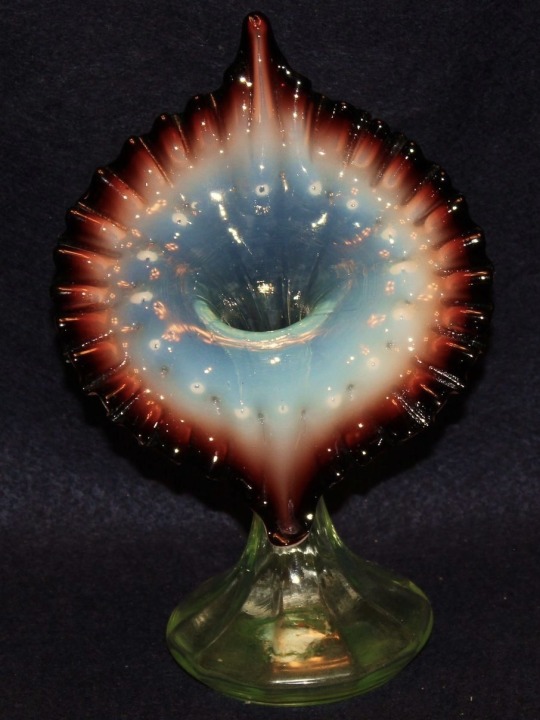
Rubina Verde/Cranberry Uranium Glass Jack in the Pulpit Vases.
951 notes
·
View notes
Text

Jack in the pulpit, Arisaema triphyllum. It always feels like running into a little plant guy when I see him. I say hello.
#pennsylvania#flowers#arisaema triphyllum#may#springtime#native plants#plants#plantblr#jack in the pulpit
231 notes
·
View notes
Photo






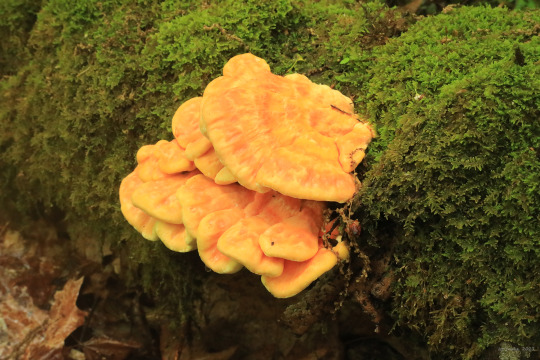


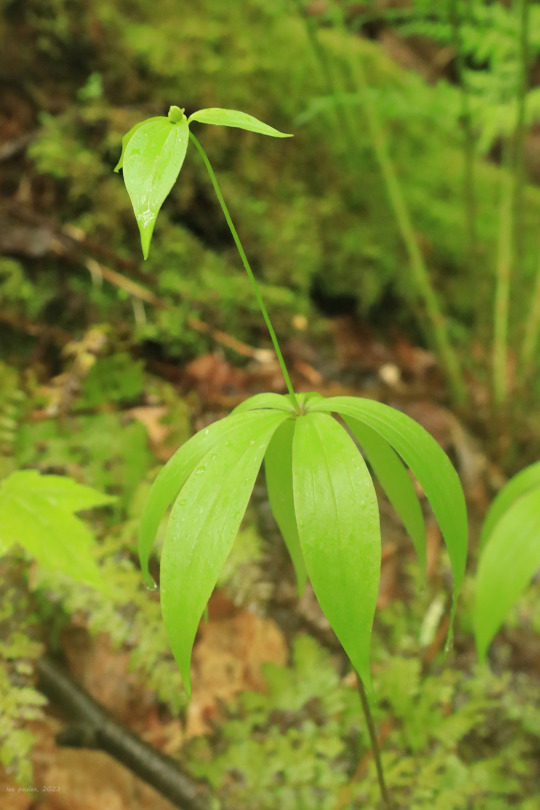
More rain in NC-WV today. As compensation, I was mesmerized by the intense green inferno of an Appalachian forest after a steady downpour. Photos from Scott Run Trail in Coopers Rock State Forest.
From top: Wild sarsaparilla (Aralia nudicaulis), whose roots were once used as a substitute for true sarsaparilla in root beer; deerberry (Vaccinium stamineum); sulphur shelf fungus (Laetiporus sulphureus); Jack-in-the-pulpit (Arisaema triphyllum) twins; a red eft, the juvenile stage of the eastern newt (Notophthalmus viridescens); and Indian cucumber (Medeola virginiana).
#appalachia#vandalia#west virginia#may#spring#wildflowers#flora#amphibian#red eft#eastern newt#wild sarsaparilla#false sarsaparilla#deerberry#sulphur shelf fungus#jack-in-the-pulpit#indian cucumber#indian cucumber-root
182 notes
·
View notes
Text

Blue River Parkway
(February 24, 2023)
#2023#Afternoon#Barred Owl#Belted Kingfisher#Biodiversity#Black Rat Snake#Bobcat#Common Yellowthroat#Day#Daytime#February#February 2023#Inhabitants#Jack in the Pulpit#Leaves#Mink#My Photo#My Photography#My Pic#My Picture#Photo#Photography#Pic#Picture#Pileated Woodpecker#Sycamore Tree#Trees#White-Tailed Deer#Wildlife#Wood Duck
35 notes
·
View notes
Text

Arisaema tryphyllum / Jack-in-the-Pulpit at the North Carolina Botanical Gardens at the University of North Carolina at Chapel Hill in Chapel Hill, NC
#Arisaema tryphyllum#Jack-in-the-pulpit#Bog onion#Brown dragon#Devil's ear#Dragon root#Indian cradle#Indian jack-in-the-pulpit#Lady-in-a-chaise#Lord-and-Lady#Memory root#Parson-in-the-pulpit#Pepper turnip#Starch Wort#Wake Robin#Wild turnip#Nature photography#photographers on tumblr#Native plants#North Carolina Botanical Gardens#UNC#UNC-Chapel Hill#chapel hill#Chapel hill NC#North Carolina
2 notes
·
View notes
Text
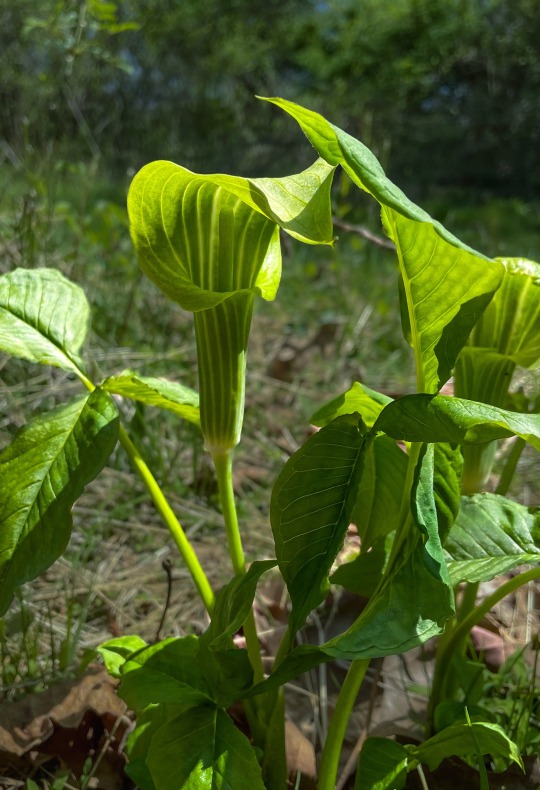
One of my favorite wildflowers!
Jack-in-the-pulpit is native to eastern north america and begins flowering around this time. Why is it one of my favorites? Well besides the fact that I ADORE arums and/or plants that smell like literal trash to seduce their victims, but also…
1) Jacks have the ability to switch between sexes (say the plant is female that year, but becomes stressed or diseased… it may become male the next year (typically old or large Jacks are female, and male Jacks are small or young). How delightful is that?!
2) SNEAKY MURDER GIRLS! Males have a small hole the bottom of their spathe (hood that covers their flower cluster), so that pollinators can escape and spread their pollen. BUT females have no escape hole in their spathe so anything that falls in is trapped forever, making successful pollination more likely.
*Sometimes female Jacks are referred to as Jills but I think that’s stupid. 🙂
21 notes
·
View notes
Photo
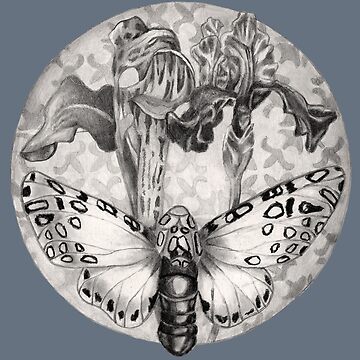
(via "Flowers and giant leopard moth" Relaxed Fit T-Shirt for Sale by KnowingWonder)
#findyourthing#redbubble#giantleopardmoth#jack-in-the-pulpit#anteannae#charcoaldrawing#graphitedrawing#creativity#knowingwonder#flyinginsects#flowerdrawing#artwork#artonpaper
2 notes
·
View notes
Text

jack-in-the-pulpit // 26 may 2023
#nature photography#original photography#puremichigan#nature#photographers of tumblr#jack in the pulpit#naturecore#michigan photography#michigan#best of nature#flowers#native plants#plantcore#greencore#mine#fleetingfutures#spring#may
20 notes
·
View notes
Text
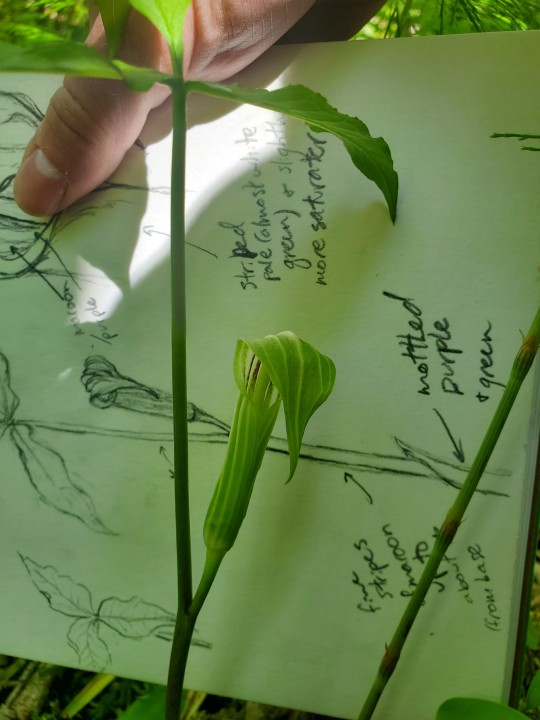

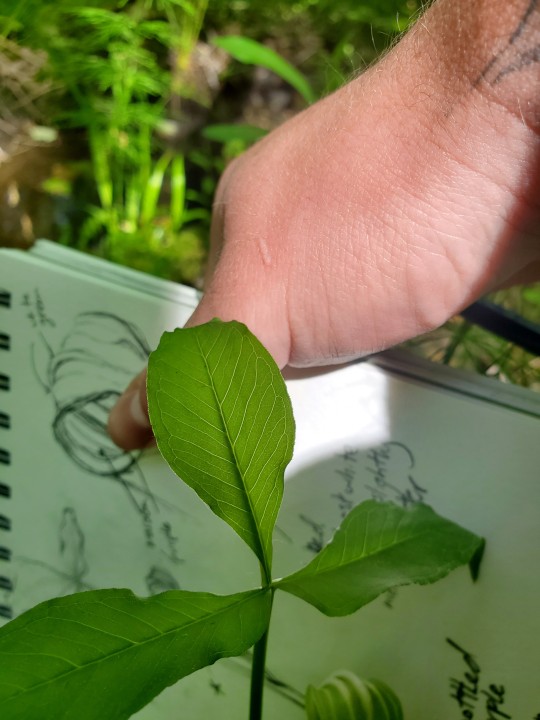
Today's plant is Arisaema triphyllum, also known as Jack-in-the-Pulpit. (photos are mine)
A. triphyllum is actually a species complex of four (or five, depending on who you talk to) closely related species. All species are native to Eastern North America and are found in deep, moist soils rich in organic matter. This group is still undergoing lots of debate in the taxonomy world, and the exact grouping and lineages are not fully known.
This species complex is part of the family Araceae, which is an incredibly cool (in my opinion) and diverse family that predominantly lives in the tropics of South American and eastern Asia.
Like most of its relatives, it attracts pollinators (at least in part) through deceptive scent compounds, which are volatilized and spread under exposure to heat. Unlike many of its relatives, Jack-in-the-Pulpit does not appear to utilize thermogenesis (active metabolic heat production) in its flowering parts to achieve this--it is posited that absorbed heat from the sun is sufficient for them to release these compounds! (Barriault et al. 2009)
Another trait it shares with almost all of its relatives is a very particular defense strategy: tiny, tiny knives. Its shiny red fruits might look tasty to some, but beware: the sensation of biting into it has been described by those brave (read: foolish) souls who've tried it as "like chewing glass."
This sensation is caused by tiny daggers of crystalline calcium oxalate (called raphides) being forcibly ejected from their cells right into your tender mouth parts by the force of your own chewing. Now that's what I call retribution!
76 notes
·
View notes